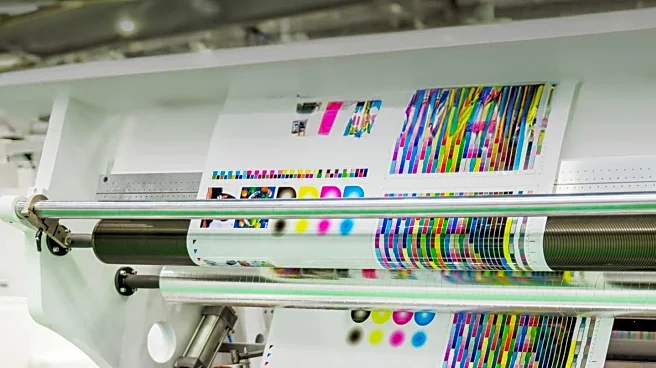What's Happening?
Researchers in Germany have developed a novel molecular sensor that can be integrated into chewing gum to detect influenza virus before symptoms appear. This sensor releases a thyme-like flavor when it encounters the virus, offering a more convenient and less invasive alternative to current flu tests, which typically require nasal or throat swabs. The sensor is based on the influenza virus glycoprotein neuraminidase, which helps the virus infect host cells. When neuraminidase interacts with the sensor, it releases thymol, a compound that can be tasted, indicating the presence of the virus. Initial lab tests have shown promising results, with the sensor releasing thymol within 30 minutes when exposed to saliva from flu patients. The researchers plan to develop an app to report taste sensations, potentially allowing for global influenza infection forecasts.
Why It's Important?
This development could significantly impact public health by providing a simple, non-invasive method for early flu detection, potentially reducing the spread of the virus. Early detection is crucial for controlling outbreaks and minimizing the impact on healthcare systems. The use of a taste-based sensor could encourage more widespread testing, as it eliminates the discomfort associated with traditional swabbing methods. If successful, this technology could lead to more proactive measures in managing flu outbreaks, ultimately saving lives and reducing healthcare costs. The approach also opens possibilities for similar applications in detecting other diseases, enhancing early diagnosis and treatment strategies.
What's Next?
The researchers plan to conduct further studies to refine the sensor and integrate it into consumer-friendly products like chewing gum or thin films. They aim to develop an app that uses AI to analyze taste reports, providing real-time data on flu prevalence. Clinical trials are expected to confirm the sensor's effectiveness in detecting influenza in pre-symptomatic stages. If successful, this technology could be commercialized, offering a new tool for public health monitoring and disease prevention. The researchers also envision expanding the sensor's application to other diseases, potentially revolutionizing early detection methods across various health conditions.
Beyond the Headlines
The ethical implications of using taste-based sensors for disease detection include privacy concerns related to data collection and the potential for misuse of health information. Additionally, the integration of AI in health monitoring raises questions about data security and the accuracy of AI-driven predictions. Long-term, this technology could shift the paradigm in disease prevention, emphasizing proactive health management and personalized medicine. The cultural acceptance of such innovative methods will play a crucial role in their adoption and success.










